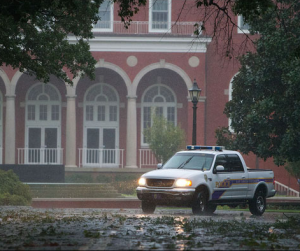Hurricane Preparedness Week 2018: Be prepared to weather the storm
While most of today’s students are too young to remember 1999’s Hurricane Floyd, the severe flooding caused by Hurricane Matthew in 2016 remains a fresh memory. Eastern North Carolina and East Carolina University students, faculty and staff have been at the forefront of helping the community prepare for and recover from these natural disasters.
The National Weather Service marked May 6-12 as Hurricane Preparedness Week, and North Carolina has designated May 13-19 as its week to urge the public to start thinking about storm season. The official start of the Atlantic hurricane season is June 1, but recent history has shown that tropical activity can begin early.
High winds, heavy rain and flooding are among the hazards associated with hurricane landfalls, and they can lead to extended utility outages, drinking water contamination, traffic issues, flooding, downed trees and structural damage.
The best way to stay safe during a hurricane or tropical storm is to be prepared before there is a storm approaching. Everyone in areas that could be impacted by hurricanes should have an emergency kit and a plan for communications during an emergency. Visit www.ready.gov for information on what should be included in an emergency kit.
Learn what areas are flood-prone and plan to avoid them. At ECU, flood-prone parking lots have signs at their entrances. These include the lower Minges and lower College Hill lots.
In the event of an approaching storm, the university will communicate updates through the ECU Alert system. Announcements can be found on the university homepage and through the emergency hotline, email and SMS text message systems.
For more information visit https://alertinfo.ecu.edu/hurricane-safety/.

The first step in hurricane preparedness is determining your risk. What types of wind and water hazards could happen where you live? How can you prepare to handle them? (Contributed image)
-by Jules Norwood
